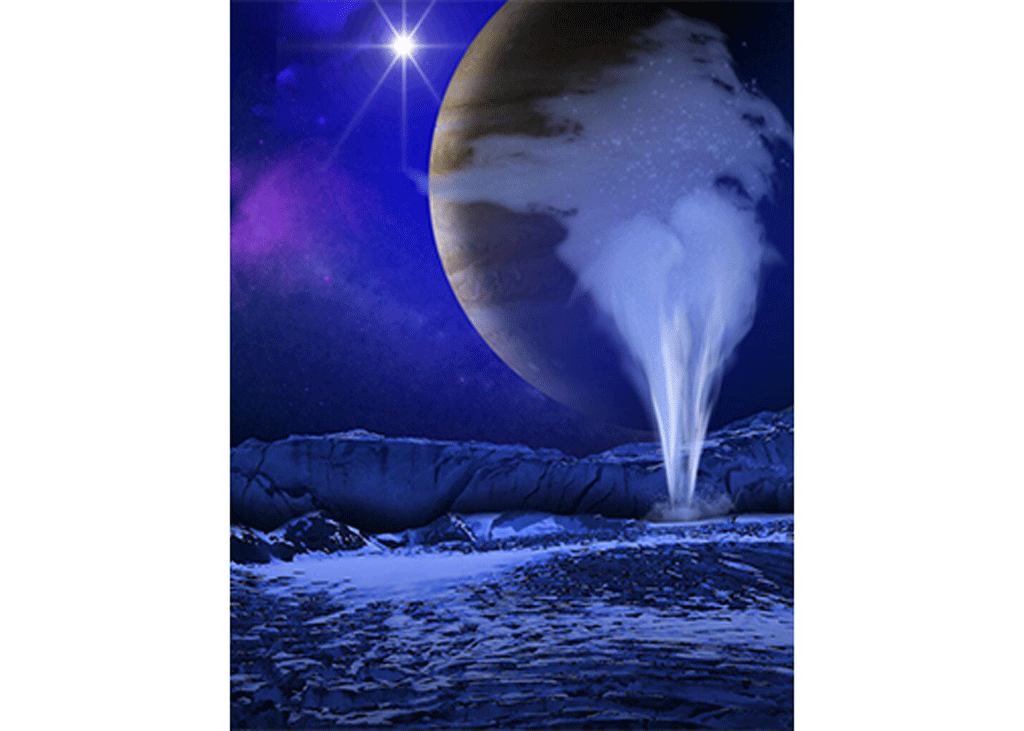Computer models find that eruptions seen on Europa are likely coming from shallow lakes embedded in the ice rather than the subsurface ocean as expected.

Jupiter’s moon Europa likely has a global subsurface ocean that could be habitable. For that reason, NASA is sending the Europa Clipper spacecraft to collect data on the icy moon and possibly even sample some of the plumes that erupt from the surface. Now, in a new paper in the Planetary Science Journal led by Elodie Lesage, computer models of Europa support the hypothesis that those plumes could be a vapor or some type of flowing slushy ice.
And if those types of eruptions are occurring on Europa, they probably come from ‘shallow, wide lakes embedded in the ice’ rather than from the subsurface ocean. Lesage explains: We demonstrated that plumes or cryolava flows could mean there are shallow liquid reservoirs below, which Europa Clipper would be able to detect. Our results give new insights into how deep the water might be that’s driving surface activity, including plumes. And the water should be shallow enough that it can be detected by multiple Europa Clipper instruments.
The models suggest that the eruptions come from reservoirs in the uppermost four to eight kilometers of the crust. At this depth, the ice that essentially encases Europa is at its coldest and most brittle, and as those pockets of water freeze, they expand and cause cracks in that ice. Those cracks then lead to eruptions, allowing the pockets of water to burst out in wide, flat swathes.
Deeper reservoirs, on the other hand, would push against the warmer surrounding ice, which then acts like a cushion and absorbs the pressure of expansion rather than cracking and erupting. Think of a filling a balloon with water and how the balloon expands without breaking (up to a point, of course). These reservoirs would have ocean floors at least eight kilometers deep.
To really understand just what is occurring with these eruptions, we will have to wait for Europa Clipper to arrive in 2030 and take observations of the surface during its roughly fifty flybys.
One of the instruments on board Europa Clipper will be the Radar for Europa Assessment and Sounding: Ocean to Near-surface… or REASON. (Weekly reminder that astronomers should not name things.) That instrument, despite the tortured backronym, will look for these water pockets in the surface ice.
In addition to the radar instrument, Europa Clipper will also have science cameras to take high-resolution color images with the ability to create stereoscopic images, a thermal emission imager with an infrared camera to map out Europa’s temperatures and possible geologic activity, and an ultraviolet spectrograph.
With all of these instruments onboard, we may find evidence of organic molecules and learn just how the icy world behaves. Me personally? I’m still rooting for space whales.
More Information
NASA press release
NASA JPL press release
“Simulation of Freezing Cryomagma Reservoirs in Viscoelastic Ice Shells,” Elodie Lesage, Hélène Massol, Samuel M. Howell and Frédéric Schmidt, 2022 July 21, The Planetary Science Journal
This story was written for the Daily Space podcast/YouTube series. Want more news from myself, Dr. Pamela Gay, and Erik Madaus? Check out DailySpace.org.
This article was originally published for medium.com.





